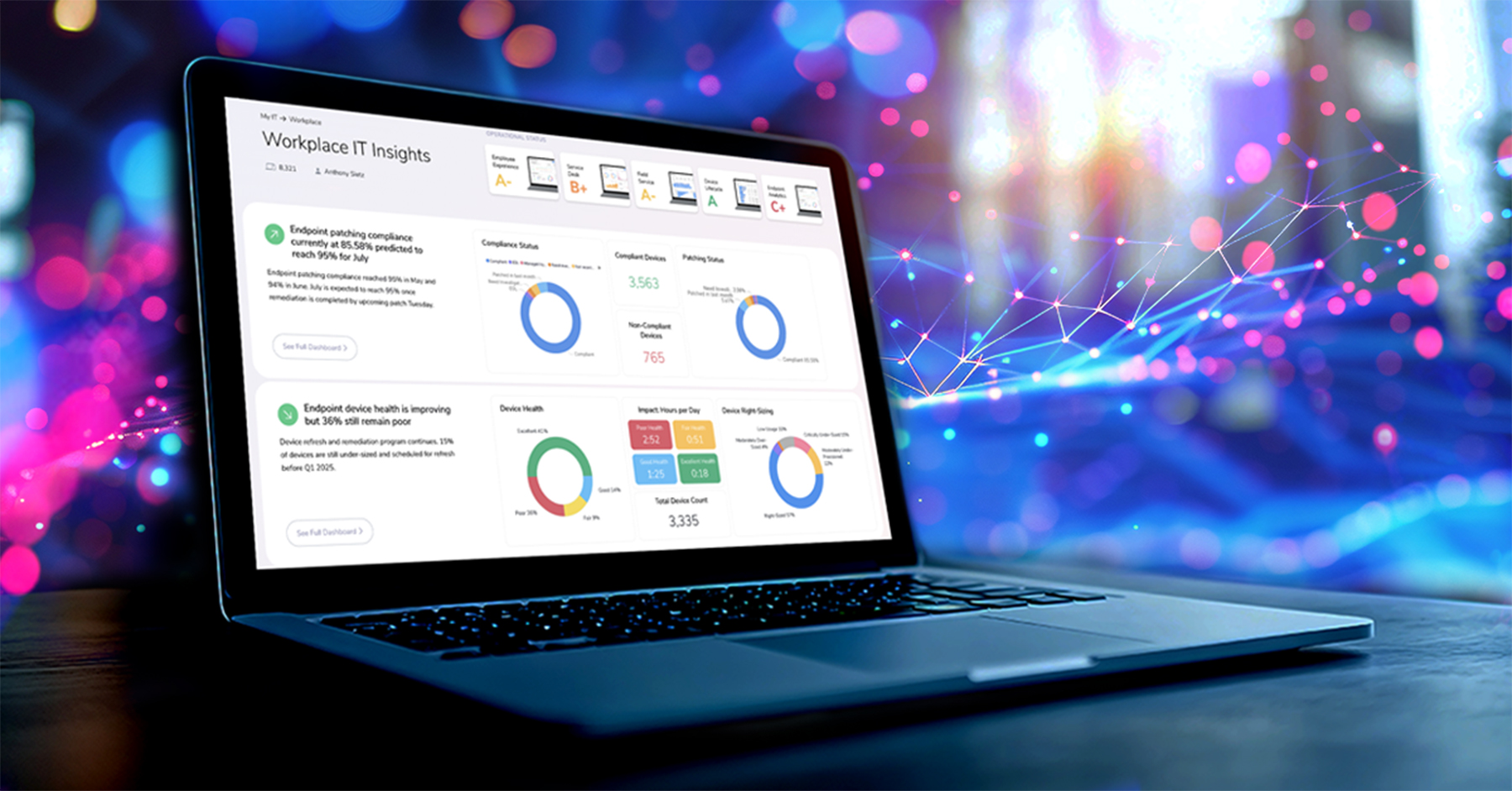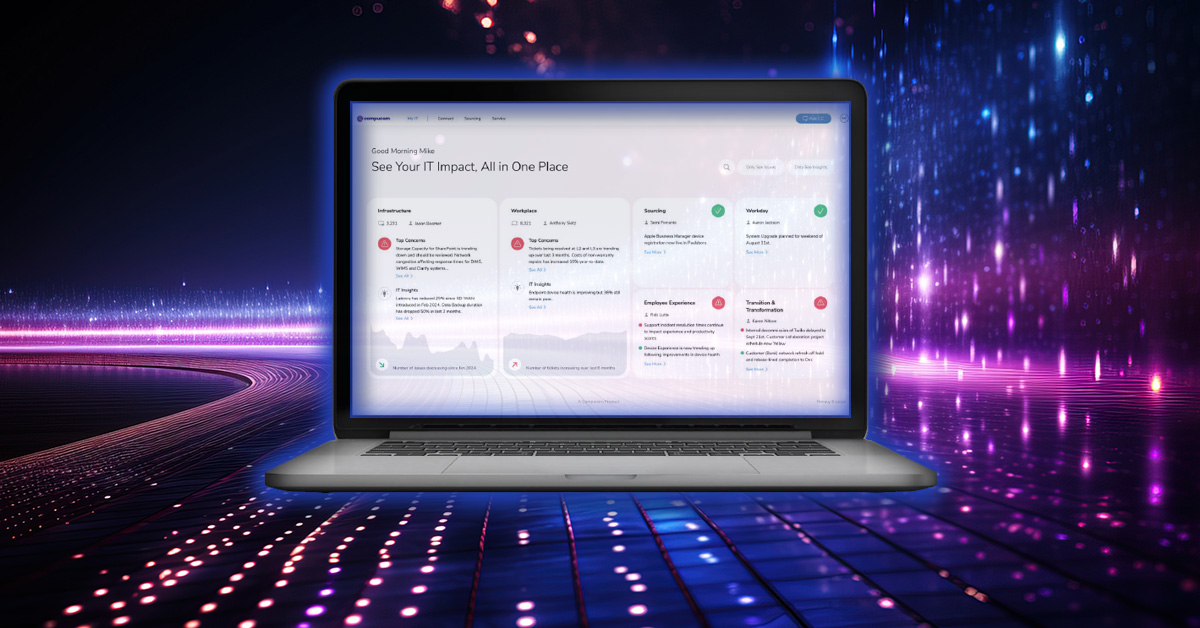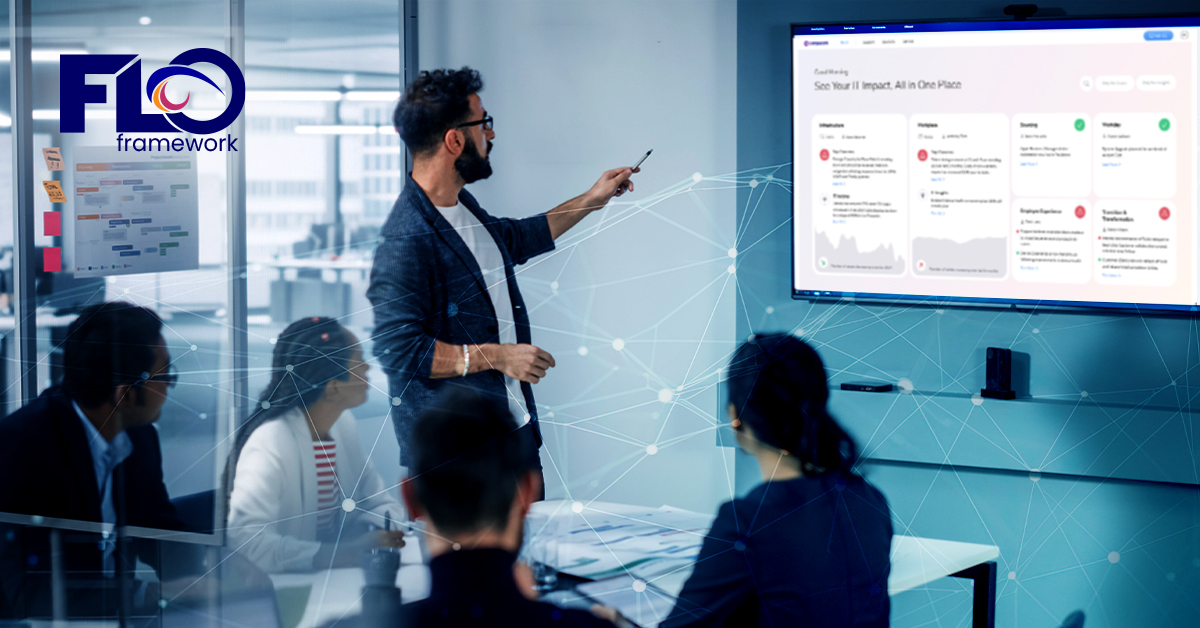- Projects and Professional Services
- Cybersecurity


Emma Mak • Staff Writer
In January 1981, the first legally binding international treaty dealing with privacy and data protection was signed. Since then, the extent of the world’s digital interconnectivity has grown exponentially, with individuals and organizations accessing data from almost everywhere in the world.
In honor of National Data Privacy Week, a celebration of that signing and a call for individuals and businesses to understand and respect privacy and data protection, here are five ways to improve data privacy in your hybrid workplace.
1. Understand Your Risk Posture
A clear-eyed view of your company’s cybersecurity posture helps identify vulnerabilities and improvement opportunities. An assessment should include quantifying risks, finding gaps, and comparing your overall posture to industry and global standards.
Don’t be shocked if your company falls short. A 2023 Cisco Cybersecurity Readiness Report indexed companies on five pillars of security: identity (users), devices, network, application workloads, and data. They concluded that only 15% of organizations globally had a mature level of preparedness to handle the security risks associated with hybrid work.
2. Implement Zero-Trust Access
Zero-Trust Access is a security model that requires continual authentication of users, devices, and applications, whether inside or outside the organization’s perimeter. It operates under the valid assumption that breaches will happen and focuses on detection, response, and rapid recovery to limit their consequences. Implementing Zero-Trust Access helps enhance data privacy in a hybrid workplace by:
- Reducing risk to endpoints by ensuring that every access request is fully authenticated, authorized, and encrypted before granting access
- Improving compliance and intellectual property protection by verifying each transaction and asserting least privilege access
- Safeguarding identities with multifactor authentication (MFA) for all user identities accessing the environment, providing an additional layer of security from unauthorized access
Your security model should balance safeguards with good user experience to ensure productivity is maintained and users don’t consider circumventing systems just to get their work done.
3. Protect Your Last Line of Defense — Your Users
Distributed workers may access your company’s data from any location and be required to manage multiple passwords. This makes users a useful “gateway” for bad actors to exploit, especially for companies using a weak security model that allows attackers to move laterally within the network.
Having multiple layers of security to protect users is a wise investment. As part of a broader Zero Trust approach, implementing a comprehensive security product like Cisco’s Duo helps protect your users with features including:
- Multifactor Authentication (MFA)
- Device Trust
- Adaptive Access Policies
- Single Sign-On
4. Educate Employees on Phishing Scams
Implementing comprehensive security solutions goes a long way to protecting your company, but criminals are unrelenting in their pursuit of valuable data. Phishing scam strategies are always changing to get your employees to divulge sensitive information – and generative AI has been a big boost for attackers, enabling more sophisticated phishing campaigns.
Providing regular training to your workforce will set them up to guard and remain vigilant against the latest phishing attacks — and is an essential part of your cybersecurity strategy.
5. Take Care of Old and Decommissioned Assets/Devices
Ensure the safe disposal of obsolete or unwanted IT equipment in a manner that is mindful of your data security and environmental impact with robust ITAD (IT Asset Disposition) policies. These can significantly improve data privacy for your hybrid workforce by completely wiping data from devices before they are disposed of or repurposed – preventing sensitive information from falling into the wrong hands.
How a Managed Services Provider (MSP) Can Help
When looking for an MSP to help fortify your company’s privacy and data protection capabilities and keep up with the constant wave of ever-evolving cyber threats, look for one with strong, long-term partnerships with industry leaders like Cisco.
At Compucom, we can advise you on developing and maintaining a resilient cybersecurity posture, from assessing your current tools and systems to helping you navigate the deployment and integration of best-fit security solutions across your IT infrastructure.
RecenT

9 Ways Strategic IT Staffing Empowers Organizations

Case Studies: Asset Intelligence and Endpoint Compliance Made Easy

AI and the Enterprise: The Future of IT Management

Exploring the Opportunities and Obstacles of AI in the Enterprise

One Dashboard to Rule Them All: Strategic IT Excellence with Full Lifecycle Observability

Transforming IT Operations with Full Lifecycle Observability: How Compucom’s FLO Framework Redefines Data-Driven Efficiency
TOPICS
5 Ways to Improve Data Privacy in the Hybrid Workplace
- Projects and Professional Services
- Cybersecurity

Emma Mak • Staff Writer
In January 1981, the first legally binding international treaty dealing with privacy and data protection was signed. Since then, the extent of the world’s digital interconnectivity has grown exponentially, with individuals and organizations accessing data from almost everywhere in the world.
In honor of National Data Privacy Week, a celebration of that signing and a call for individuals and businesses to understand and respect privacy and data protection, here are five ways to improve data privacy in your hybrid workplace.
1. Understand Your Risk Posture
A clear-eyed view of your company’s cybersecurity posture helps identify vulnerabilities and improvement opportunities. An assessment should include quantifying risks, finding gaps, and comparing your overall posture to industry and global standards.
Don’t be shocked if your company falls short. A 2023 Cisco Cybersecurity Readiness Report indexed companies on five pillars of security: identity (users), devices, network, application workloads, and data. They concluded that only 15% of organizations globally had a mature level of preparedness to handle the security risks associated with hybrid work.
2. Implement Zero-Trust Access
Zero-Trust Access is a security model that requires continual authentication of users, devices, and applications, whether inside or outside the organization’s perimeter. It operates under the valid assumption that breaches will happen and focuses on detection, response, and rapid recovery to limit their consequences. Implementing Zero-Trust Access helps enhance data privacy in a hybrid workplace by:
- Reducing risk to endpoints by ensuring that every access request is fully authenticated, authorized, and encrypted before granting access
- Improving compliance and intellectual property protection by verifying each transaction and asserting least privilege access
- Safeguarding identities with multifactor authentication (MFA) for all user identities accessing the environment, providing an additional layer of security from unauthorized access
Your security model should balance safeguards with good user experience to ensure productivity is maintained and users don’t consider circumventing systems just to get their work done.
3. Protect Your Last Line of Defense — Your Users
Distributed workers may access your company’s data from any location and be required to manage multiple passwords. This makes users a useful “gateway” for bad actors to exploit, especially for companies using a weak security model that allows attackers to move laterally within the network.
Having multiple layers of security to protect users is a wise investment. As part of a broader Zero Trust approach, implementing a comprehensive security product like Cisco’s Duo helps protect your users with features including:
- Multifactor Authentication (MFA)
- Device Trust
- Adaptive Access Policies
- Single Sign-On
4. Educate Employees on Phishing Scams
Implementing comprehensive security solutions goes a long way to protecting your company, but criminals are unrelenting in their pursuit of valuable data. Phishing scam strategies are always changing to get your employees to divulge sensitive information – and generative AI has been a big boost for attackers, enabling more sophisticated phishing campaigns.
Providing regular training to your workforce will set them up to guard and remain vigilant against the latest phishing attacks — and is an essential part of your cybersecurity strategy.
5. Take Care of Old and Decommissioned Assets/Devices
Ensure the safe disposal of obsolete or unwanted IT equipment in a manner that is mindful of your data security and environmental impact with robust ITAD (IT Asset Disposition) policies. These can significantly improve data privacy for your hybrid workforce by completely wiping data from devices before they are disposed of or repurposed – preventing sensitive information from falling into the wrong hands.
How a Managed Services Provider (MSP) Can Help
When looking for an MSP to help fortify your company’s privacy and data protection capabilities and keep up with the constant wave of ever-evolving cyber threats, look for one with strong, long-term partnerships with industry leaders like Cisco.
At Compucom, we can advise you on developing and maintaining a resilient cybersecurity posture, from assessing your current tools and systems to helping you navigate the deployment and integration of best-fit security solutions across your IT infrastructure.
Recent Blogs

9 Ways Strategic IT Staffing Empowers Organizations

Case Studies: Asset Intelligence and Endpoint Compliance Made Easy

AI and the Enterprise: The Future of IT Management

Exploring the Opportunities and Obstacles of AI in the Enterprise

One Dashboard to Rule Them All: Strategic IT Excellence with Full Lifecycle Observability




